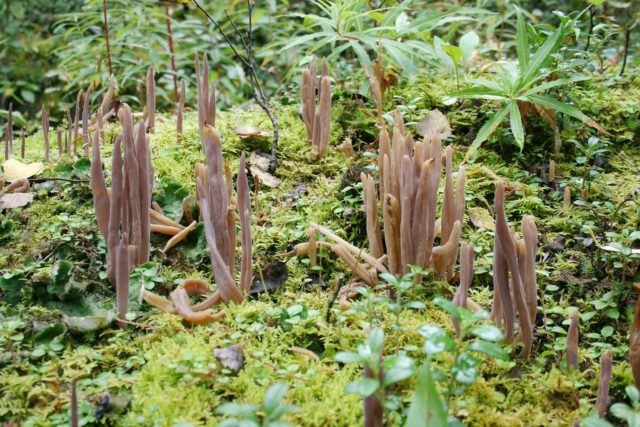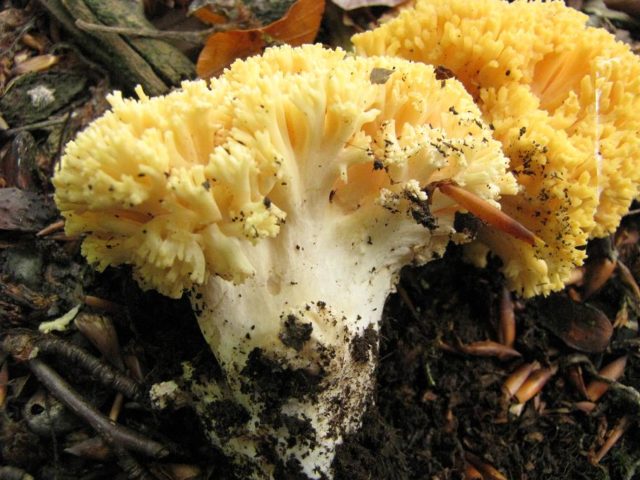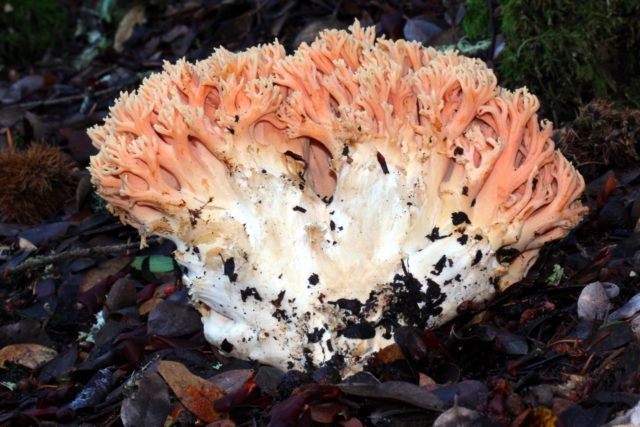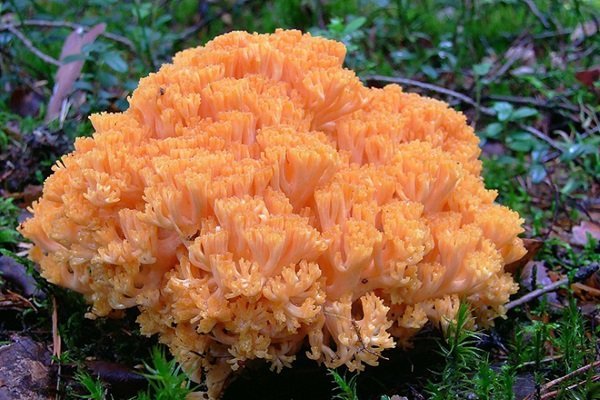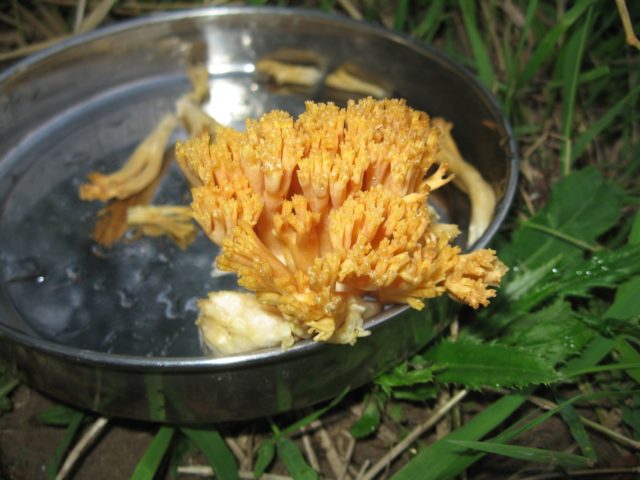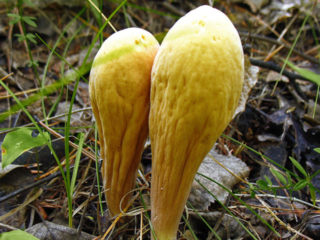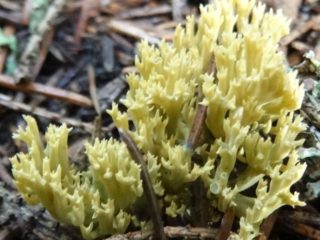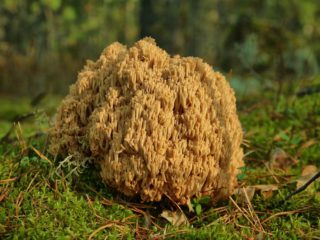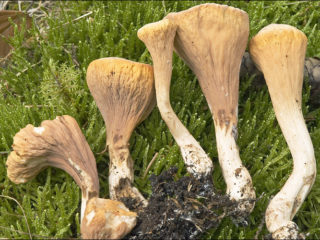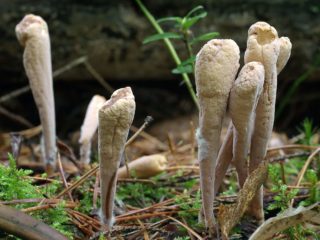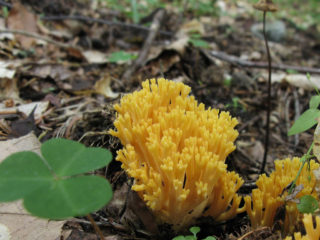Content
The kingdom of mushrooms is extremely vast, and among this multitude there are truly amazing species that ordinary mushroom pickers often simply do not pay attention to. Meanwhile, many of these specimens are not only amazingly beautiful, but also edible. These species include horned mushrooms, the colonies of which are very reminiscent of sea corals.
Features of horned mushrooms
Most mushroom pickers know horned mushrooms under the name “deer horns” or “hedgehog mushrooms.” Some call them forest corals due to their similar appearance. In general, horned mushrooms bear little resemblance to mushrooms in their traditional form. They lack a cap and stem; the fruiting body is a single outgrowth in the form of a bush or separate shoots.
Rogatiki are pronounced saprophytes; they live on old rotten wood or forest litter. Some types of these mushrooms are edible and quite pleasant to the taste, but the vast majority of mushroom pickers treat them with suspicion and do not consider them as an object of quiet hunting.
Types of horned mushrooms
According to different classifications, the mushroom family Hornataceae (lat. Clavariaceae) includes about 120 different species. Here are photos and descriptions of some of the most striking representatives of horned mushrooms:
- Alloclavaria purpurea (Clavaria purpurea). The mushroom is a single elongated fruiting body of a cylindrical shape, up to 10-15 cm high, with pointed or rounded tips. Their color is light purple, becoming light brown with age, sometimes ocher, clay or beige. They usually grow in dense groups, each of which can contain up to 20 pieces. Clavaria purpurea grows mainly in coniferous forests. According to some sources, it forms mycorrhiza with the roots of coniferous trees and mosses. The main habitat is North America, but is found in the temperate zone of Russia and Europe, as well as in China and Scandinavia. There is no data on the edibility of the mushroom, nor on its toxicity.
- Clavulina coralliformes (Rogatik comb). Forms a bushy fruiting body with many small shoots. The height of the bush can reach 10 cm. The tops of the fruiting bodies are flat, comb-shaped, and pointed. The color of the mushroom is white, milky, sometimes slightly yellowish or creamy, the flesh is brittle and white. Grows from July to October in mixed or coniferous forests, on soil or litter of fallen forest debris. It can grow either as a single point or in large groups. The mushroom is not poisonous, but it is usually not eaten because of its bitter taste. However, this does not prevent some lovers of culinary experiments from trying it, as evidenced by the available reviews.
- Ramaria yellow (Yellow horn, Deer horns). This is a rather large mushroom, it can reach a height of 20 cm, while its diameter can reach up to 16 cm. The fruiting body is a massive central part of white color, reminiscent of a cabbage stalk, from which numerous shoots grow in different directions, slightly similar to branching deer antlers (hence the name - deer horns). Their color is yellow, lighter closer to the base, becoming brighter at the periphery. When pressed, the color of the mushroom changes to cognac. It grows in mixed and coniferous forests, with peak growth observed in late summer and early autumn. Widely distributed in the forests of Karelia, found in the Caucasus, Western and Central Europe. It belongs to edible mushrooms, but yellow horned mushroom is collected only at a young age, since adult specimens begin to become very bitter. Before you start preparing yellow ramaria, the fruiting bodies of the mushroom must be soaked and heat-treated.
- Ramaria is beautiful (Rogatik is beautiful). The shape resembles a dense bush with a height and diameter of up to 20 cm. It consists of a massive leg of bright pink color, which becomes white with age, as well as numerous yellow branches with yellow-pink tips. Turns red when pressed. With age, the fruiting bodies lose their brightness and turn brown. Found in deciduous forests, it grows on soil or old rotted leaves. It is not consumed as food, since if ingested it can cause severe intestinal disorders.
- Clavulina amethyst (Rogatik amethyst). It has elongated branching fruit bodies fused at the base of a very unusual purple color. The flesh is white with a purple tint. The mushroom bush can reach a height of 5-7 cm.It grows mostly in deciduous forests, with peak growth in September. Often found in large colonies. Amethyst hornet, despite its unusual “chemical” color, is quite edible, but frying it is not recommended due to its peculiar taste. It is best used for drying, boiling or making mushroom sauce.
A short video about how hornets grow in the wild:
Edibility of horned mushrooms
As noted above, there are no poisonous species among horned animals. However, mushroom pickers are wary of this family; its representatives have too unusual an appearance. Among them there are quite a large number of edible ones; according to the all-Russian classification of mushrooms by nutritional value, they belong to IV, the last group, which includes, for example, honey mushrooms and oyster mushrooms. The table shows the main types of hornets according to their edibility:
Edible | Inedible |
Amethyst Yellow bunch-shaped Reed Golden Truncated | Fusiform Comb Straight Pistillate Pale yellow Dudchaty Purple |
The inedibility of horned mushrooms is determined by their bitter taste or acrid aftertaste. Some species have a strong, unpleasant odor. All edible species can be eaten after heat treatment.
Colonies of horned mushrooms are usually quite large in size, so you can pick up a basket of these mushrooms without literally leaving the spot. Another undoubted advantage is that they are difficult to confuse with something else; they do not have poisonous counterparts. The big advantage of these mushrooms is that they are never wormy. All this opens up wide possibilities for using them in cooking.
The benefits and harms of horned mushrooms
Horntails do not have any special nutritional value, but they can be used for medicinal purposes. This is due to the natural substances of the tryptamine group that are part of the fruiting body. There is evidence that, with the help of extracts from hornworts, diseases such as Crocker's sarcoma and Ehrlich's carcinoma are successfully treated.
Harm from ingesting hornets can only be associated with indigestion or unpleasant taste sensations. There is no information about serious poisoning with these mushrooms that led to serious consequences for the body.
Collection rules
When collecting slingshots for food, you need to remember that you should take only young specimens; the older the mushroom, the more bitter it is. In addition, it is worth adhering to the general rules for all lovers of “silent hunting”:
- Fungi are capable of accumulating heavy metals and radionuclides. Therefore, you cannot take specimens growing along railroads, busy highways, or growing on the territory of abandoned military installations or industrial zones.
- If you are not 100% sure that a mushroom is edible, then you should not take it.
How to cook horned mushrooms
Due to the structural features of the fungus, quite a lot of dirt and debris accumulates between the fruiting bodies. Therefore, before cooking, they need to be washed for a long time and thoroughly in running water. After this, the cattails are boiled for half an hour in water with added salt. The water is drained, the mushrooms are washed and re-cooked in salted water for another 15-20 minutes. Then the water is drained.
Now they can be eaten.They are usually fried with vegetables, sometimes used as an ingredient in mushroom soup or sauce.
Conclusion
Horntail mushrooms are very interesting representatives of the mushroom kingdom. Despite the edibility of some species, they are not popular among mushroom pickers. However, numerous positive reviews about these mushrooms indicate that the situation may change, and very soon dishes from horned mushrooms will take their rightful place in cookbooks.

